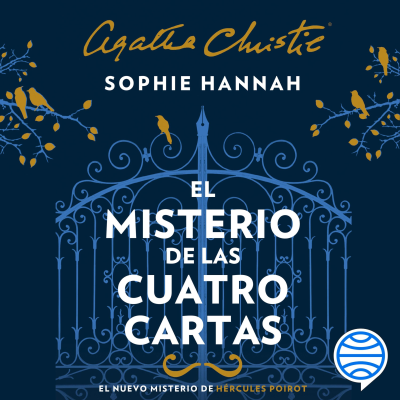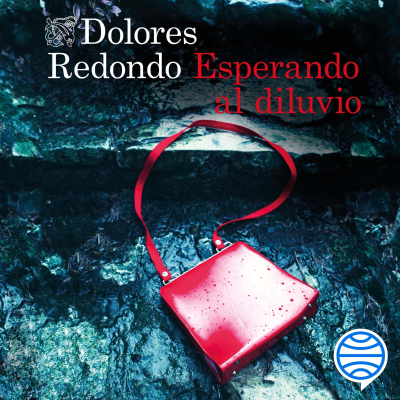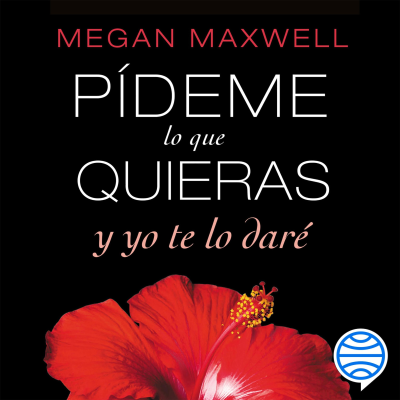
National Gallery of Art | Videos
inglés
Cultura y ocio
Empieza 7 días de prueba
$99 / mes después de la prueba.Cancela cuando quieras.
- 20 hours of audiobooks / month
- Podcasts solo en Podimo
- Podcast gratuitos
Acerca de National Gallery of Art | Videos
Stay up to date with video podcasts from the National Gallery of Art, which include documentary excerpts, lectures, and other films about the Gallery's history, exhibitions, and collections.
Todos los episodios
254 episodiosVera Lutter | nga
Drawing on one of the earliest forms of photographic technology, Vera Lutter (German, b. 1960) creates monumental photographs of compelling architectural spaces. She first builds a camera obscura by darkening the interior of closed spaces—a suitcase, shipping container, or apartment—and leaving a small pinhole opening for light to enter. Placing light-sensitive paper opposite the opening, Lutter then exposes an image of the exterior view on the paper for an extended period of hours, days, even months. The unusually long exposure time challenges notions of photography’s instantaneity, producing images that capture the passage of time rather than a singular moment. For Ca' del Duca Sforza, Venice II: January 13–14, 2008 Lutter transformed a room in the Palazzo Sforza into a camera to create a stunning and uncanny view of the Grand Canal in Venice.
Hubert Robert at the Flower-Strewn Abyss
Nina L. Dubin, associate professor of art history, University of Illinois at Chicago. On the occasion of the exhibition Hubert Robert, 1733–1808 at the National Gallery of Art, Nina Dubin presented a lecture on September 26, 2016, that examined a series of Hubert Robert’s paintings from the 1780s. The theme of these works is courtship menaced by the potential for calamity. Male suitors climb ladders in an attempt to procure flowers for their female love interests or cling to tree branches while trying to secure a token of their affection in the form of a bird’s nest. No less than his contemporaneous views of Paris—evocations of a city vacillating between prosperity and ruin—Robert’s chronicles of the rise and potential fall of a man in love embody the suspenseful confluence of dread and hope that characterized the prerevolutionary period. As Dubin argues, it is no accident that in such a climate, Robert would take up the theme of a lover’s potential mishap: along with the ancient myths of Icarus, Phaethon, and others who fatally believed they could defy the force of gravity, the folly of love furnished eighteenth-century audiences with a shorthand means of coming to terms with the dawning ethereality—the manias, fads, and bubbles—of modern existence.
John Wilmerding Symposium on American Art Part VI: Rockwell Kent and the End of the World
Justin Wolff, associate professor of art history, University of Maine. In November 1937 Life magazine featured four lithographs by the American artist Rockwell Kent (1882-1971) in the article “Four Ways in Which the World May End.” In this lecture from the inaugural John Wilmerding Symposium on American Art, held at the National Gallery of Art on October 22, 2016, Justin Wolff analyzes the so-called “End of the World” lithographs, part of the National Gallery of Art collection, in the context of scientific theories about cosmic cataclysm, suspicions that European fascism portended an apocalypse, and Kent’s solidarity with a radical leftism that anticipated capitalism’s disintegration. Wolff considers looking beyond their political meaning to what the lithographs tell us about Kent’s renowned emotional intensity and wanderlust—specifically, what they reveal about his tenacious quest to acquire psychic integrity in barren lands at the ends of the world. The John Wilmerding Symposium on American Art is made possible by a generous grant from The Walton Family Foundation.
John Wilmerding Symposium on American Art, V: Marsden Hartley’s Maine
Randall Griffey, associate curator, department of modern and contemporary art, Metropolitan Museum of Art. American painter Marsden Hartley (1877-1943) entered the modernist canon as a result of the abstract paintings he created in Germany in 1914-1915. But the paintings he created of his home state of Maine late in his career beginning in 1937 brought him his greatest acclaim during his lifetime. In fact, Hartley began his career in 1909 at Alfred Stieglitz’s 291 gallery as a painter of Maine. Previewing a major exhibition to open in March 2017 at the Met Breuer and in July 2017 at the Colby College Museum of Art, Randall Griffey illuminates the painter’s dynamic, rich, and occasionally contradictory artistic engagement with his native Maine. Maine was to Hartley a springboard to imagination and creative inspiration, a locus of memory and longing, a refuge, and a means of communion with previous artists who painted there, especially Winslow Homer. Speaking at the inaugural John Wilmerding Symposium on American Art, held on October 22, 2016, at the National Gallery of Art, Griffey showcases Hartley’s impressive range, from early post-impressionist interpretations of seasonal change in the region to late, folk-inspired depictions of Mount Katahdin, the state’s great geological landmark. The John Wilmerding Symposium on American Art is made possible by a generous grant from The Walton Family Foundation.
Discoveries from the Dwan Gallery and Virginia Dwan Archives
Paige Rozanski, curatorial assistant, department of modern art, National Gallery of Art. In this lecture held on September 26, 2016, as part of the Works in Progress series at the National Gallery of Art, Paige Rozanski sheds light on the discoveries she made during her research at the Dwan Gallery Archives and the Virginia Dwan Archives in preparation for the exhibition Los Angeles to New York: Dwan Gallery, 1959–1971. Rozanski underscores the integral role this material played in planning the exhibition, illustrates how the archives contributed to scholarship, and outlines her approach to writing the chronology and exhibition history published in the exhibition catalog.
Elige tu suscripción
Premium
20 horas de audiolibros
Podcasts solo en Podimo
Podcast gratuitos
Cancela cuando quieras
Empieza 7 días de prueba
Después $99 / mes
Empieza 7 días de prueba. $99 / mes después de la prueba. Cancela cuando quieras.























